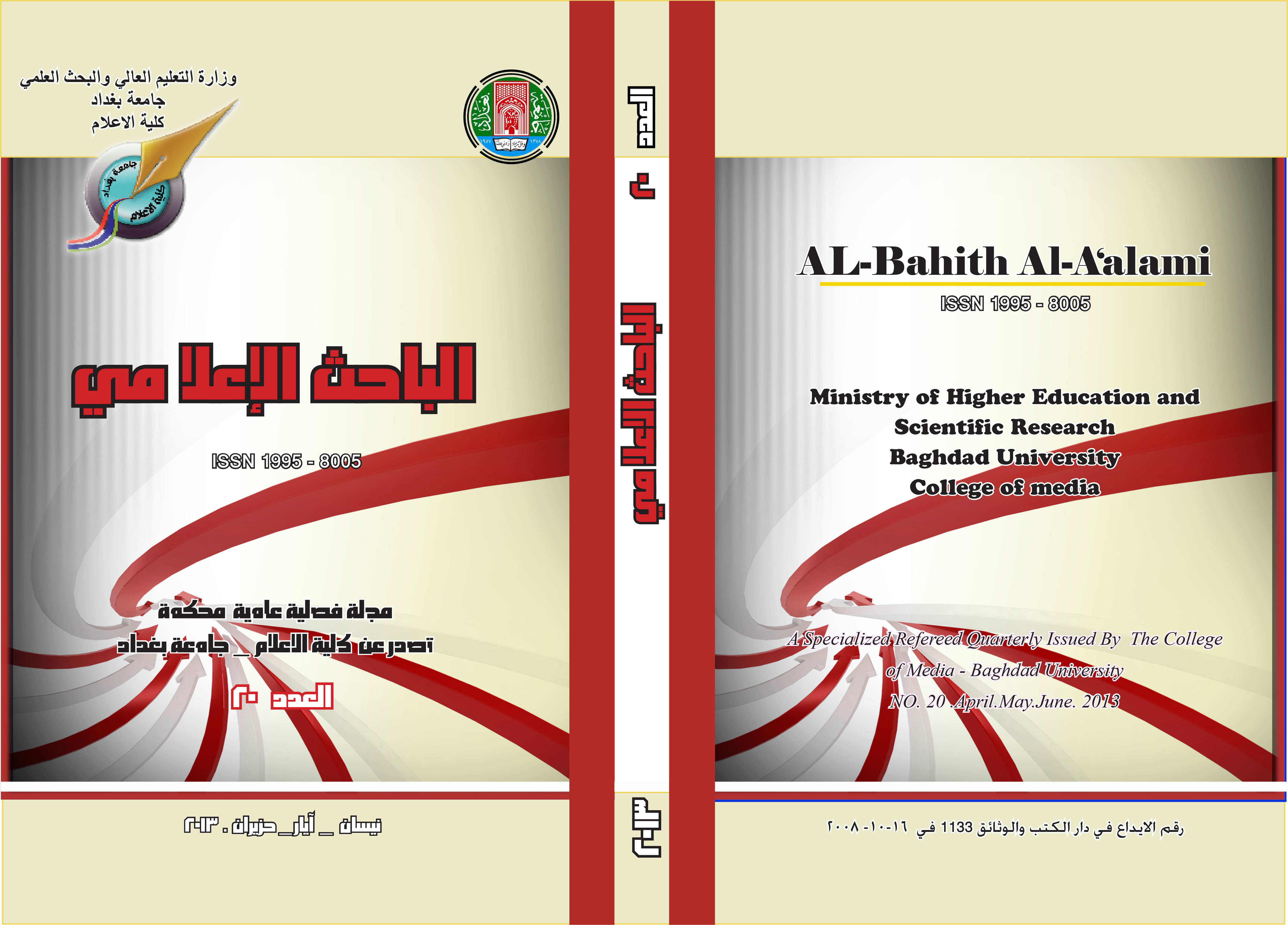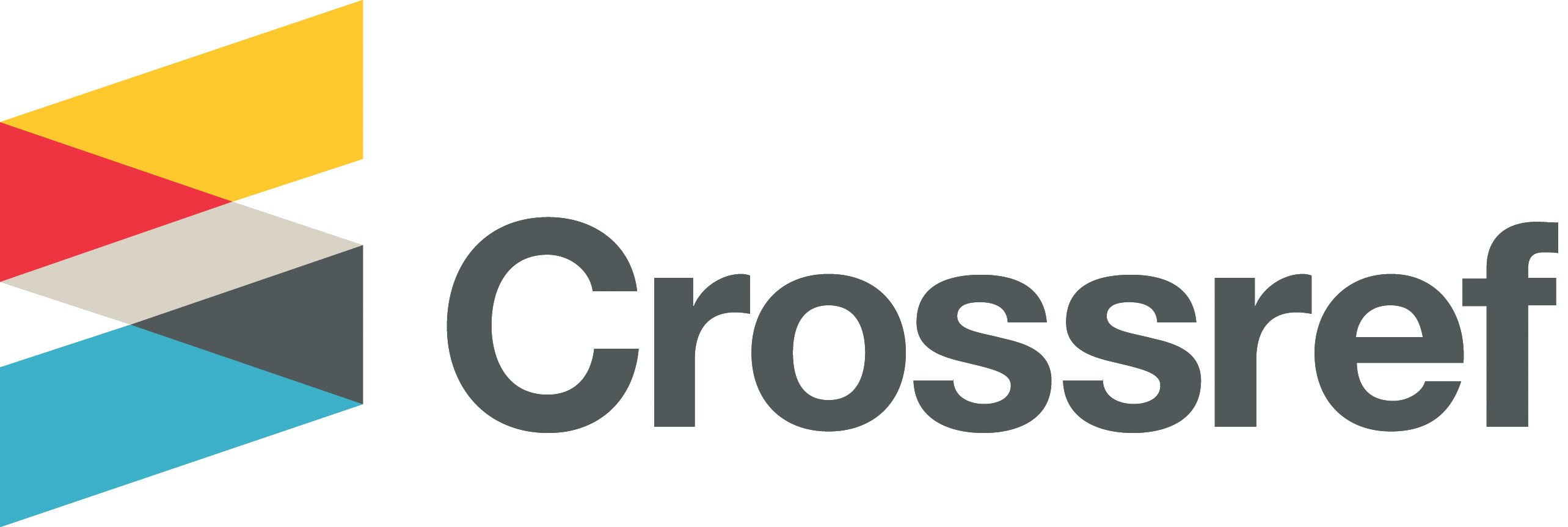HUMAN MODELING IN THE IRAQI PRESS
(A Survey of Human Modeling for March And April 2011)
DOI:
https://doi.org/10.33282/abaa.v5i20.609Keywords:
Human Modeling, Iraqi PressAbstract
This research deals with what so called concept of The Human Model and how Iraqi Media concerns of this concept practically as it plays a key role in attracting readers, on the first hand. On the second, it is important to shed light on the scientific desire of the Iraqi Media and how it deals with this contemporary trend especially in editorial media.
The importance of the research stems from the fact that it alerts to a new stream of modern trends in journalistic writing, according to many modern Arab and foreign media studies; and to the importance of employing human modeling in dealing with facts, events, issues and problems in various editorial arts within their effective influence in conciliation.
If this trend can contribute to the use of the largest number of readers to follow the events and benefit from the use of human modeling in the delivering the required media message.
This study has ended by many conclusions:
- The Iraqi press has embraced human modeling in social subjects rather than in other political and cultural issues.
- The art of the column as the most prominent art employing human modeling was adopted. Then, it followed by the art of investigative journalism. Next, the art of news report, followed by articles in order.
- Iraqi Media has adopted this concept especially in dealing with social events more than any other ones, i. e.; political and cultural. In principle, the study used columns to functionalize this concept. And, in a way or another, it also used features, stories and essays.
- Emphasizing the use of known and unknown human models, as well as the employment of men and women of various functions and practical names, as models for the presentation of problems and events and facts and use them within the various press arts, in order to woo the reader towards this issue or that. This allowed readers to follow the issue or the incident without boredom, but recommends fans to use human modeling in journalistic writing should be taken care of and used in order to persuade the reader towards this event or that problem positively or negatively.
Downloads
References
2- Fowler, Roger. Language in the news:Discourse and ldeology in the press Routledge: London and Newyork, 2001.p.3
3- د.نبيل راغب، أساسيات العمل الصحفي، مكتبة لبنان ناشرون، الشركة المصرية العالمية للنشر-لونجمان، ط1، 1999، ص95-96.
4- Van DiJik, T. Racism and the Press.London: Routedge, 2002, p. 73
5-Hertog, J.k.and M. McLeod, Framing Public Life: Perspectives on Media and our Understanding of the social world, S.D. Reese, o.H. Gandy and A. E. Grant, 2001, pp.60-71
6-جوناثان بينغل، المدخل إلى سيمياء الإعلام، ترجمة: د.محمد شيا، المؤسسة الجامعية للدراسات والنشر والتوزيع، بيروت، ط1، 2011، ص123.
7- د.عبد العزيز حمد عبد الله الحسن، وسائل الإعلام والإعلان .. وصف نظري للعلاقة والتأثير، مجلة عالم الإقتصاد، العدد 168، بتاريخ 1-1-2006.
8-د.محمود خليل، م، س، ذ.
9-المصدر السابق نفسه.
10-تيسير مشارقة، صناعة الأسطورة والنمذجة في وسائل الإعلام (السينما إنموذجاً)، عمان، بدون دار نشر، 2005، ص36.
11- آرثر آسا بيرغر، وسائل الإعلام والمجتمع، ترجمة:صالح خليل أبو إصبع، سلسلة عالم المعرفة، الكويت، آذار 2012 ص33.
12- المصدر السابق نفسه، ص42.
13- المصدر السبق نفسه ص23.
14-د.محمود خليل، م، س، ذ.
15-المصدر السابق نفسه.
16- Fowler, Roger, op.cit.p.3-4
17--Van DiJik, op.cit.p.46
18-المصدر السابق نفسه، ص120
19- د.حسن عماد مكاوي ود.ليلى حسين السيد، الاتصال ونظرياته المعاصرة، الدار المصرية اللبنانية، القاهرة، ط9، 2010، ص380.
20- للمزيد انظر: ملفين ل.ديفلير وساندرا بول- روكيتش، نظريات وسائل الإعلام، ترجمة كمال عبد الرؤوف، الدار الدولية للنشر والتوزيع، القاهرة، ط1، 1993، ص300-305) وانظر أيضا: د.عماد حسن مكاوي وليلى حسين السيد، الاتصال ونظرياته المعاصرة، ص382-384.
• ملاحق البحث
1-نمذجة بشرية في فن العمود الصحفي.
2-نمذجة بشرية في فن التحقيقات.
3-نمذجة بشرية في فن التقرير الإخباري.
4-نمذجة بشرية في فن المقال
- Dr. Mahmoud Khalil, Modern Trends in Journalism Writing (The Stream of Human Modeling) Lectures given in the Skills Development Course for Iraqi Journalists, the League of Arab States, the General Union of Arab Journalists and the Egyptian Journalists Syndicate, Cairo, April 2008.
2- Fowler, Roger. Language in the news: Discourse and ldeology in the press Routledge: London and Newyork, 2001.p.3
3- Dr. Nabil Ragheb, Basics of Journalism, Lebanon Library Publishers, Egyptian International Publishing Company - Longman, 1st Edition, 1999, pp. 95-96.
4- Van DiJik, T. Racism and the Press. London: Routedge, 2002, p. 73
5-Hertog, J.k. and M. McLeod, Framing Public Life: Perspectives on Media and our Understanding of the social world, S.D. Reese, o.H. Gandy and A. E. Grant, 2001, pp. 60-71
6- Jonathan Bingle, Introduction to the Simia of Media, translated by: Dr. Muhammad Shea, University Foundation for Studies, Publishing and Distribution, Beirut, Edition 1, 2011, p. 123.
7- Dr. Abdulaziz Hamad Abdullah Al-Hassan, Media and Advertising ... A theoretical description of the relationship and influence, Aalam Al-Iktissad Magazine, Issue 168, dated 1-1-2006.
8- Dr. Mahmoud Khalil, M., S., LLC.
9 - Same previous source.
10- Tayseer Masharqa, Myth-making and Modeling in the Media (Cinema as a Model), Amman, without a publishing house, 2005, p. 36.
11- Arthur Asa Berger, Media and Society, Translated by: Salih Khalil Abu Asbah, The World of Knowledge Series, Kuwait, March 2012, P.33.
12- Same previous source, p. 42.
13- Same previous source, p. 23.
14- Dr. Mahmoud Khalil, M., S., LLC.
15- Same previous source.
16- Fowler, Roger, op.cit.p.3-4
17 - Van DiJik, op.cit.p.46
18-Same previous source, p. 120
19- Dr. Hassan Emad Makkawi and Dr. Laila Hussein Al-Sayed, Communication and its Contemporary Theories, The Egyptian Lebanese House, Cairo, 9th Edition, 2010, pg 380.
20- For more, see: Melvin L. Devler and Sandra Paul-Rukic, Media Theories, translated by Kamal Abdel Raouf, International Publishing and Distribution House, Cairo, 1st Edition, 1993, pp. 300-305) and also see: Dr. Imad Hassan Mekkawi and Leila Hussein Al-Sayed, Communication and its Contemporary Theories, pp. 382-384.
Downloads
Issue
Section
License
Authors retain copyright and grant the journal right of first publication with the work simultaneously licensed under a Creative Commons Attribution License (CC BY 4.0) that allows sharing the work with recognition of authorship and initial publication in ABBA journal.


















